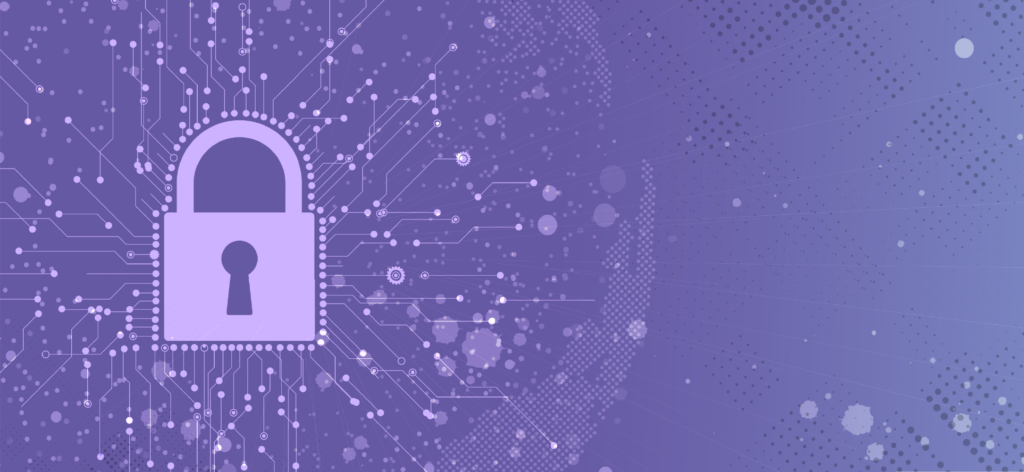The value of data security and data privacy compliance in the interconnected business landscape goes beyond mere checklists; it’s the cornerstone of trust in digital transactions. Companies often grapple with the complexity of simultaneously ensuring data protection and abiding by evolving international regulatory standards.
For IT professionals, this means staying in the loop with the latest technological advancements and potential vulnerabilities.
When we talk about data privacy and security compliance, several technological advancements stand out — such as Customer Data Platforms (CDPs), Blockchain, and Multi-Factor Authentication (MFA).
CDPs, in particular, offer a centralized database that not only integrates customer data from multiple sources but also manages consent attributes, aiding in compliance with emerging data privacy regulations. These technologies collectively contribute to building a robust framework for data privacy and security compliance.
Meanwhile, C-suite executives need a strategic overview of their data protection plans, must understand the business implications of data compliance, and ensure alignment with company objectives.
Check out the new 2025 Gartner Critical Capabilities for Customer Data Platforms, courtesy of Treasure Data.
Understanding Data Security Compliance
Data security and data privacy compliance revolves around abiding by external regulatory standards, often mandated by governments or industry bodies. This requires robust technologies like centralized customer data management, data masking, data cleansing, data encryption, consent management, data classification, and identity resolution.
Keeping track of regulations like GDPR, CCPA, or HIPAA demands a proactive approach. For instance, IT teams can employ automated compliance monitoring solutions, whether they are stand alone or incorporated into an all-in-one data management solution like a CDP, while CISOs need to ensure that policies are continuously updated to reflect the evolving regulatory requirements.
The Challenges of Balancing Security and Compliance
Every MarTech professional knows the challenges of integrating multiple tools without exposing data. An overemphasis on compliance can sometimes stifle systems, leading to longer processing times and inefficiencies. For instance, implementing rigid access controls might hinder timely data access for marketing campaigns. To ensure that data is both securely but quickly shared across different teams, organizations could implement automated self-service data access controls like Role-Based Access Control (RBAC) in CDPs, API Gateways for selective data exposure, and Data Masking for non-production environments.
Conversely, the cost of non-compliance is high — both in terms of potential fines and reputational damage. Regular penetration testing, vulnerability assessments, and a keen understanding of data flow within the organization are essential to anticipate potential pitfalls. In this context, CDPs can offer granular access controls and audit trails, ensuring that only authorized personnel have access to sensitive data, thereby aiding in compliance and risk management.
Frameworks and Tools for Compliance
With privacy regulations like GDPR and CCPA growing increasingly stringent, a comprehensive compliance framework is essential. Cloud Access Security Brokers (CASBs) are becoming invaluable for secure and compliant cloud operations, offering visibility, threat protection, and data security.
To navigate the evolving landscape of compliance, organizations are adopting a range of specialized tools:
- Cloud Access Security Brokers (CASBs): These provide real-time visibility and control over data in the cloud, making them especially useful for meeting various regulatory standards.
- Data Loss Prevention (DLP) Software: This tool helps in identifying and securing sensitive data, ensuring it doesn’t leave the network, which is crucial for compliance.
- Compliance management platforms: These platforms offer templates and checklists specifically designed to meet GDPR and CCPA requirements, streamlining the compliance process.
- Identity and Access Management (IAM) Systems: IAM controls who has access to what within your network, a key component in ensuring only authorized personnel have access to personal data.
- Vulnerability management tools: These tools scan for weaknesses that could be exploited, helping organizations to be proactive in securing data, a requirement under GDPR.
- Encryption tools: Encrypting data at rest and in transit is a fundamental requirement for compliance.
- Automated audit and assessment tools: These can automatically assess the state of compliance, providing actionable insights for improvement.
By integrating these tools into their compliance framework, organizations can better prepare for the challenges of ensuring both data privacy and security.
Best Practices for Risk Management
At its core, risk management evaluates potential threats in relation to existing vulnerabilities. Tools like Threat Intelligence Platforms can help organizations anticipate and respond to emerging threats. Additionally, utilizing data classification tools ensures that sensitive data gets the highest protection.
An integrated approach is pivotal. This includes establishing an Incident Response Plan (IRP), continuous user training, and leveraging AI-driven anomaly detection tools to identify unusual patterns that might indicate a breach or non-compliance.
Building a Robust Security Compliance Program
Cross-functional collaboration is another aspect of utmost importance. Sales and customer service teams should be trained in data handling best practices, regularly using tools like Data Loss Prevention (DLP) software and customer data platforms (CDP), ensuring that sensitive information doesn’t leave the organization without proper authorization.
For CIOs and CISOs, the emphasis should be on creating a culture of data security and data privacy. This entails investing in the right tools, but also ensuring that these tools are effectively integrated into daily operations, complemented by regular audits and employee training sessions.
Case Study: Successful Balance between Security and Compliance
Microsoft Corporation is a multinational technology company known for its software products like Microsoft Windows, Microsoft Office, and others. The company is subject to a variety of compliance standards, including GDPR, HIPAA, and many more. To balance security and compliance, Microsoft has established a comprehensive compliance framework. This includes a detailed risk assessment, implementation of robust security controls, and constant monitoring and improvement.
Microsoft has implemented strategies like Privacy by Design and Privacy by Default, which take privacy into account throughout the entire engineering process. They also conduct regular Red Team exercises (simulated attacks) to find and fix security vulnerabilities.
Their security measures have helped them maintain a strong security posture while adhering to regulatory requirements. Their approach has been recognized in the industry as a good example of balancing data security and privacy and compliance.
The Future of Data Security and Privacy Compliance
Emerging technologies like quantum computing pose both challenges and opportunities. Quantum encryption could redefine data security and privacy, but businesses also need to anticipate potential threats from quantum-powered cyber-attacks.
IoT devices, given their proliferation, necessitate an entirely new approach to data security compliance. Network segmentation, ensuring these devices operate in a restricted environment, and regular firmware updates are just a few practices that IT professionals need to incorporate.
Striking the perfect balance between data security and data privacy and compliance is an intricate dance that requires both technical acumen and strategic foresight. For IT professionals, this means continuous learning and adapting; C-suite executives, on the other hand, need to foster a company-wide culture of data awareness and compliance.
To truly thrive in this environment, businesses must view security and compliance not as burdens but as integral components of their operational blueprint, evolving with every technological advance and regulatory shift.
As technology and regulations continue to evolve, the role of CDPs and similar tools will only become more critical in maintaining the delicate balance between data security and privacy. For businesses to thrive in this complex environment, a proactive approach to data privacy and security is non-negotiable.
This involves not only using advanced tools and technologies but also fostering a culture that values data privacy as a cornerstone of business integrity. In doing so, organizations can turn the challenges of compliance into opportunities for building trust and delivering exceptional customer experiences



